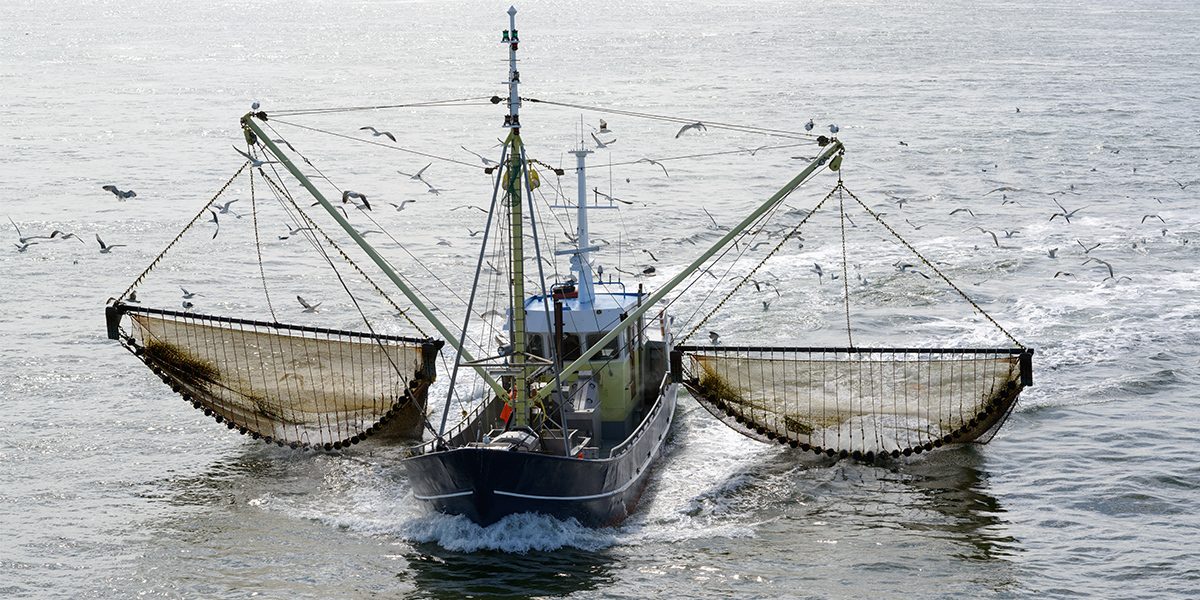Trawl fishing leads to decreased nutrient cycling in sediments
“In the top layer of the seafloor sediment, large amounts of dead organic matter are stored”, says first author Emil De Borger. “When marine organisms die, they degrade and slowly sink downward. Their remains accumulate in the upper few centimeters of sand, thus creating a food-rich layer that houses many invertebrate organisms, such as worm species, crabs, shellfish and starfish.” At the same time, microbial recycling processes in the sediment cause the formation of inorganic nutrients, which are gradually released back into the water. De Borger: “In shallow coastal seas, this so-called buffering capacity in part regulates the life-cycle of organisms like algae and animals that live in the sea.”

Poorer soil life
The upper sediment layer is also the natural habitat of economically important flatfish like sole and plaice. When they are being fished, the sediment is disturbed by the fishing nets, which are weighed down with chains or ropes, digging into the sediment. The new model built by Emil De Borger and his colleagues from the Royal NIOZ Netherlands Institute for Sea Research shows that such fishing activities strongly decrease the build-up of nutrients and organic matter in the sediment. De Borger: “It leaves a poorer habitat for soil inhabitants, which are actively fished away. This, in turn, leads to less biomass and different species: through constant disturbances, large animals that grow slowly are replaced by smaller, fast growing species.”
Fifteen-year simulations
Marine biologist De Borger ran simulations of fifteen years varying from one to five fishing activities per year, and studied changes to the processes of organic matter recycling. “With increasing annual fishing events, the top seafloor sediment layer was impoverished more.” Since it is this top layer of sediment where fresh organic matter is deposited, there also appears to be no significant difference between deeper-penetrating bottom trawling gears and more shallow fishing gears like pulse trawling. “Both affected the top layer equally, with respect to the studied recycling processes.”
De Borger explains why he and his colleagues from NIOZ, Ghent University and Wageningen Marine Research used a model: “NIOZ has performed field-experiments to investigate the acute impact of bottom trawling on the cycles of organic matter on the seafloor, but with experiments it is less obvious to unravel the long-term effects. A ‘before-after’ experiment would, for example, have to last several years and it would be a big challenge to carry out in a controlled way. With a model, we can gain insight into the long-term dynamics more easily.”
More sustainable fishing strategies
In cooperation with the fishing sector, NIOZ is focusing on solutions for the problem. “The impact of bottom trawling on the seafloor should not be underestimated, but neither should its socio-economic importance”, says De Borger. “With model developments such as ours, we eventually aim to optimize fishing strategies to safeguard important functions of the sediment. These functions eventually benefit the productivity of the ecosystem, including economically valuable fish species. Our model will be part of a tool that NIOZ is developing to help fishing efforts become more sustainable.”
Publication
De Borger, E., Tiano, J., Braeckman, U., Rijnsdorp, A. D., and Soetaert, K.: Impact of bottom trawling on sediment biogeochemistry: a modelling approach, Biogeosciences, 18, 2539–2557, https://doi.org/10.5194/bg-18-2539-2021, 2021.
Figure 1 Sampling locations in the North Sea. Offshore stations MudL and FineL sampled by De Borger et al. (2021), and nearshore stations (inset) in the Belgian part of the North Sea sampled by Toussaint et al. (2021). Low (L) nutrient content relative to high (H) nutrient content. Basemap: © Esri, depth raster by GEBCO Compilation Group (2020).